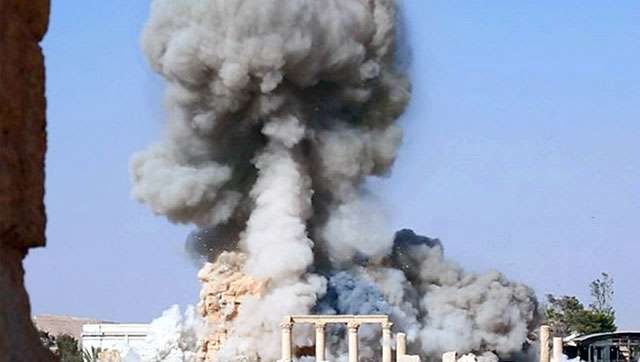September 28, 2017
The God’s Own Country has in possession a culture rich with temples, traditions, mythical stories and many amazing facts. The deeper we dig up, the more fascinated the land turns us!

September 28, 2017
The God’s Own Country has in possession a culture rich with temples, traditions, mythical stories and many amazing facts. The deeper we dig up, the more fascinated the land turns us!

With a deep rooted cultural heritage and diversities threading out and connecting regions, Kerala is a land of historical treasures and spiritual destination. Picking a few on any given criterion is indeed troublesome; however, you may not afford to miss having known about these temples.
Sri Padmanabhaswamy Temple
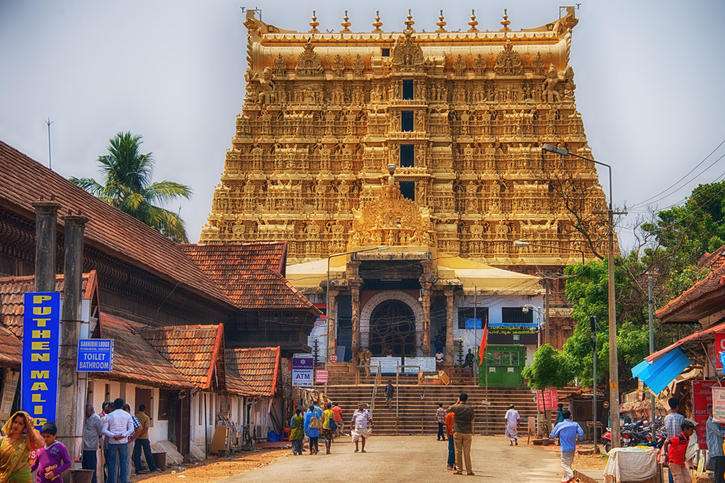
Sri Padmanabhaswamy Temple – Image credit: My Bus Blog
Famed and esteemed for multiple reasons, Sri Padmanabhaswamy Temple has been an attention hub and focal point to the masses across the world. Undoubtedly, one of the best prospective monuments to be honoured in the list of Wonders of the World, this temple is located in Thiruvananthapuram, the largest city and the capital of Kerala. Acclaimed as the richest place of worship ever, the architecture of the temple is an intricate fusion of the indigenous Kerala style and the Dravidian style. The main deity is Lord Vishnu, enshrined in the Anantha Sayanam posture, which extends to a length of 18 feet. Devotees are blessed with the sight of this huge shrine: face, navel and feet from three doors. In line with the Temple Entry Proclamation,only Hindus are allowed to pay visit inside the temple.
Story Of Origin: As Narrated In Ananthasayana Mahatmya: It is believed that Lord Vishnu was pleased by the devotion of a Tulu Brahmin Divakara Muni, and appeared before him as a lovely child. The child later disappeared in the place where the temple is situated, and the place is believed to have the divine and powerful presence of Lord Vishnu. On the 950th year of Kali Yuga a reinstallation of the idol was done.
Eyes from all around the globe are glued to this temple, awaiting the unveiling of the centuries' old secrets of unaccounted treasures kept in the temple. Keeping the mysteries aside, the temple still hosts rich feasts to travel and history enthusiasts and spiritual minds.
Getting There: The city is well connected with the rest of the country with road and rail networks.
Nearest railway station: Thiruvananthapuram Central, about 1 km away
Nearest airport: Trivandrum International Airport, about 6 km away
Best Visiting Time: Anytime round the year.
Dress Code To Be Followed At The Temple: Only Hindus are permitted inside the temple. Men need to wear mundu or dhoti (worn around the waist and going down up to the heels) and should not wear shirts of any kind. Women need to wear sari, mundum neriyathum (set-mundu), skirt and blouse, or half sari. Dhotis are available for rent at the temple entrance. Nowadays, temple authorities allow wearing of dhotis over pants or churidhar to avoid inconvenience to the devotees.
Credits And Courtesy: www.keralatourism.com, www.thehindu.com and www.sreepadmanabhaswamytemple.org.
Sabarimala Shri Ayyappa Temple
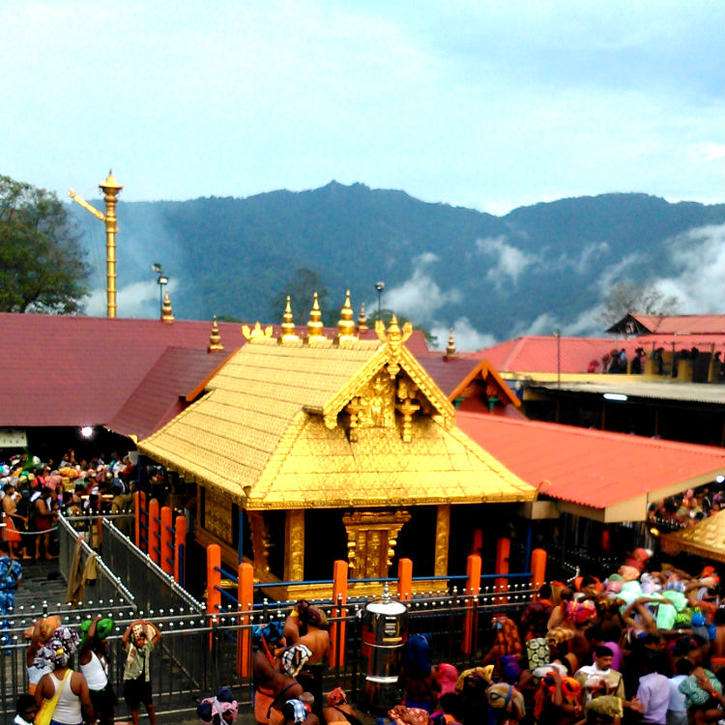
Sabarimala Shri Ayyappa Temple – Image credit: Kerala tourism
Sabarimala Shri Ayyappa temple is one of the most ancient and prominent Sastha temples of the country. Despite being located in a remote hilltop in the Western Ghat mountain ranges of Pathanamthitta district of Kerala, the temple attracts almost 3-4 million pilgrims every year. This temple is an epitome of harmony, welcoming people regardless of caste, creed or religion they belong to. However, women who fall under the age bracket of 10 to 50 are restricted from entering the temple compound. Pilgrimage period begins in the month of November and ends in January.
Pilgrims are supposed to undergo an austerity period of 41 days, abstaining from non-vegetarian food and carnal pleasures to learn control over the senses and clean mind. Normally, pilgrims set out in groups under a leader, each carrying a cloth bundle called Irumudi Kettu, containing a coconut filled with ghee, puja materials, rice and banana which will be folded into two halves and carried on one's head. The journey to the temple is not an easy one as vehicles reach only to Pampa. Pilgrims have to climb almost 4-5 kms through dense forest to reach the Sannidhanam. The temple welcomes with the message “THATHWAMASI”, which means “That is you”. Due to this, pilgrims call each other Swami, acknowledging their divinity.
Story Of Origin: Manikandan, an adopted child of King of Pandalam dynasty, was revealed as a divine power. The Lord further asked the king that he could construct a temple at Sabarimala, where his deity can be installed and further explained what the devotees can attain his ‘darshan’. Then after blessing the King, Lord disappeared in the forest and after that the king built the temple dedicated to Lord Ayyappan.
Getting There: The city is well connected with the rest of the country with superb road and rail networks.
Nearest railway station: Chengannur railway station, which is located at a distance of about 90 km from Pamba, is the railway station nearest to Sabarimala. Chengannur is en route between Thiruvananthapuram and Kottayam and hence is connected to all other important railheads in India. One can avail taxi services from Chengannur to Pamba.
Nearest Airport: The nearest airports are the international airports in Cochin and Thiruvananthapuram. Pilgrims reaching Kochi by air will have to travel about 160 km by road and those flying in to Thiruvananthapuram will have to travel about 170 km by road in order to reach the temple.
Best Visiting Time: November – January
Dress Code To Be Followed At The Temple: Devotees wear blue, black or saffron-coloured costumes. Devotees abstain from shaving during the 41 days of austerity period and wear a Rudraksha/Tulsi chain. They also wear Vibhuthi/Sandal paste on their forehead.
Credits: hellotravel.com
Guruvayoor Sri Krishna Temple
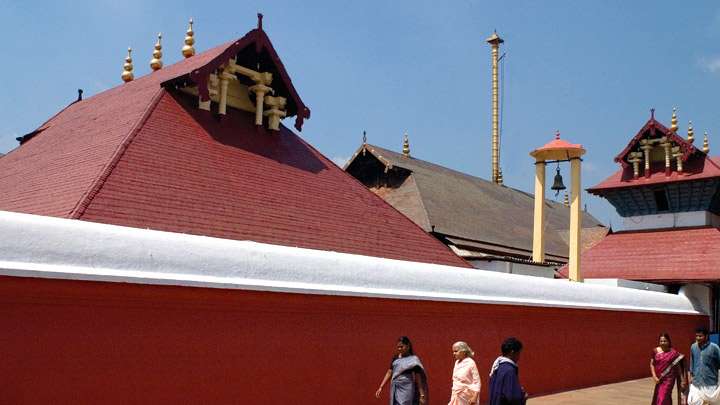
Guruvayoor Sri Krishna Temple – Image credit: Kerala tourism
The Guruvayur temple is known as "Bhooloka Vaikunta", believed to be at least 5,000 years old. The main deity here is Lord Vishnu, worshipped in the form of Krishna. The idol is believed to have worshipped by Vasudeva and Devaki, Lord Krishna’s parents in Treta yuga. When the city of Dwaraka got submerged in water, Brihaspati, the preceptor of Gods and his disciple Vayu, God of winds, went in search of another holy spot to install the idol. Their search ended with meeting Parasurama They were taken by Parasurama to a beautiful lake full of lotus and the idol was placed here, which is now Guruvayur temple. The temple was built by Vishwakarma the divine architect. Over the years, Guruvayur increased in popularity, especially after 16th century when it became one of the most popular pilgrimage centres in Kerala.
Best Time To Visit: The ideal time to pay visit to Guruvayur is between the months of October and March.
Getting There: The temple is located about 29 km from Thrissur. Guruvayur is well connected from all major towns of Kerala and Tamil Nadu. Various private and state government-owned bus companies operate regular services to this temple town.
Nearest railway station: Guruvayur Railway station. The nearest major railway station with better connectivity is at Thrissur.
Nearest airport: Cochin International Airport at Nedumbassery, near Kochi.
Dress Code For Entering The Temple: Strict dress code exists for people who wish to enter the Guruvayur Temple. Men are to wear mundu around their waist, without any dress covering their chest. But it is allowed to cover the chest region with a small piece of cloth (veshti). Boys are allowed to wear shorts, but they are also prohibited from wearing a shirt. Girls and women are not allowed to wear any trouser-like dresses or short skirts. Women are allowed to wear sari and girls are to wear long skirt and blouses. Presently, the dress code for women have been relaxed with salwar being allowed
Credits: guruvayurdevaswom.nic.in
Mannarasala Sree Nagaraja Temple
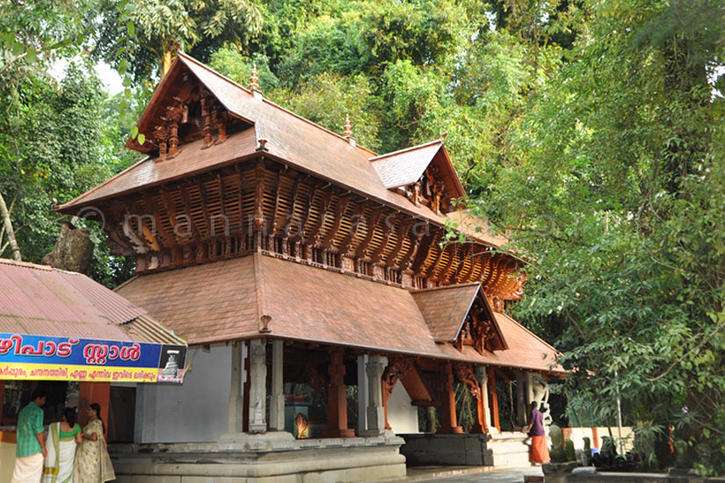
Mannarasala Sree Nagaraja Temple – Image credit: Mannarasala
Mannarasala Sree Nagaraja Temple is an ancient and internationally known centre of pilgrimage for the devotees of serpent gods. The famous Nagaraja temple "Mannarasala" is nestled in a forest glade, like most snake temples. The temple is located about three kilometers to the north-east of the bus station in N.H.47 at Haripad, in Alappuzha district of Kerala. The temple covers an area of 16 acres of dense green forest grove.
The two main idols are Nagaraja or the serpent king and his consort, Sarpayakshini. The most popular offering of this temple is ‘Uruli Kamazhthal’, the placing of a bell metal vessel upside down in front of the deity, which is believed to restore fertility to childless couples.
Story Of Origin: Parasuram, an avatar of Lord Vishnu, reclaimed Kerala from the sea by wielding his axe and gifted the land to Brahmins. But, unfortunately the soil was saline hence infertile. Parashuram wanted to desalinate the soil. He meditated for the blessings of Lord Shiva. Shiva asked him to meditate for the blessings of Vasuki, the Nagaraja (King of serpents). Vasuki was pleased with the meditation of Parasuram and he ensured the presence of serpents for the successful fertilisation of the soil. At this juncture, he consecrated the idol of Nagaraja at the present serpent temple site.
People wanting children as well as those affected by Naga Dosha come to this temple and it is believed that all their problems are solved.
Best Time To Visit: The temple is open throughout the year from 5 AM – 12 PM (Till 1 PM on Sundays) and 5:30 PM – 7:30 PM
Getting There: The temple is located about three kilometers to the south-east of the bus station in N.H.47 at Haripad, in Alleppey district of Kerala. Various cabs and auto rickshaws are available near the Haripad bus station and Railway station to reach Mannarasala at nominal fare.
Nearest Airport: Thiruvananthapuram International Airport, which is at a distance of 121 kms and Nedumbassery International Airport, which is 132 kms away.
Dress Code To Be Followed: One needs to be in traditional attire.
Credits: mannarasala.org, theboldindian.com
Attukal Bhagavathy Temple
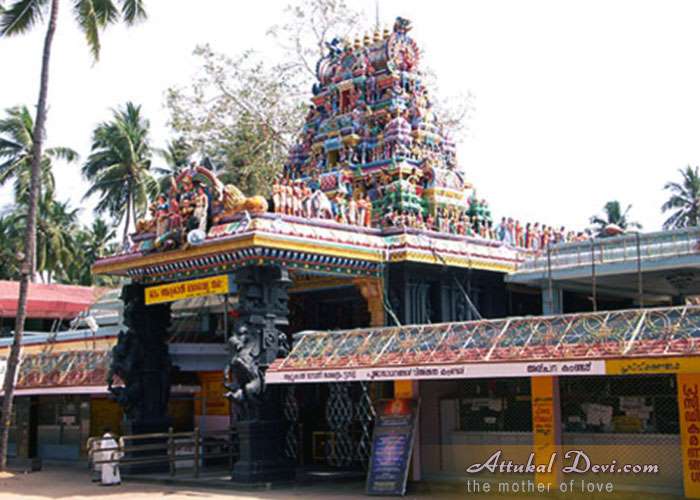
Attukal Bhagavathy Temple – Image credit: Attukal Devi
Attukal Bhagavathy Temple is just 2 Km from the main city of Trivandrum (Thiruvananthapuram) and is located at a rural-looking area, although the surroundings are highly urbanised. Attukal temple is the abode of the goddess, who is the supreme preserver and destroyer. She cares for her devotees like a mother does her children. Anyone visiting the Attukal temple is first struck by the beauty and charm of the temple architecture. The temple structure is a harmonious conglomeration of both Kerala and Tamil Nadu styles of architecture.
Story Of Origin:
The story revolves around Kannagi, who having lost her husband to a miscarriage of justice at the court of the Pandyan Dynasty, wreaks her revenge on his kingdom. Kannagi cursed the city with disaster. However, after the request from the goddess of the city, she withdrew her curse and later, attained salvation.
After setting fire to Madurai City, Kannagi on her way to Kodungalloor in Kerala, gave "Darsan" to the natives at Attukal in Thiruvananthapuram. They constructed a Temple at Attukal.
The events related to Kannagi have high influence in the traditions and culture of Tamil Nadu and Kerala.
The temple is renowned for the annual Attukal Pongala festival, in which over three million women participate. A festival that has figured in the Guinness Book of World Records for being the single largest gathering of women for a religious activity.
Best Time To Visit: February-March
Getting There:
Nearest railway station: Thiruvananthapuram, about 3 km away
Nearest airport: Trivandrum International Airport, about 5 km away
Nearest bus station: Trivandrum Central Bus Station located at Thampanoor is about 2 Km from the shrine and the City Bus Station located at EastFort is about 1.5 Km from the shrine.
Dress Code To Be Followed: One needs to be in traditional attire.
Credits: keralatourism.org, attukaldevi.com
Chottanikkara Devi Temple
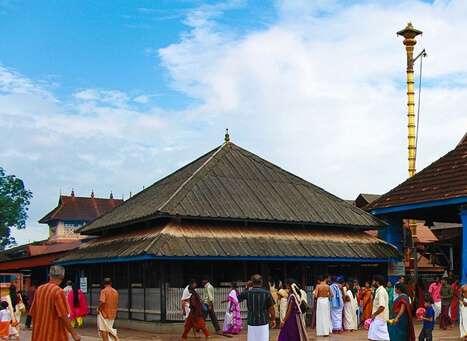
Chottanikkara Devi Temple – Image credit: Tour My India
Chottanikkara temple is one of the most popular temples in the state dedicated to mother goddess Shakthi devi. Chottanikkara devi is worshipped in three forms: as Maha Saraswathi (god of knowledge) in the morning, draped in white; Mahalakshmi (mother of wealth) at noon, draped in crimson; and as Sree Durga (mother of power) in the evening, decked in blue. The Goddess here is the embodiment of all three forms of Feminine divine. A steady worship of the deities in this temple is believed to cure the worst of mental maladies and supernatural possessions by evil spirits.
Story Of Origin: The temple is believed to be about 1500 years old. Kannappan, a forest dweller and a doting father who loved his daughter, sacrificed a beast to Goddess each day, and on one occasion he could not find any animals to slaughter. He asked his daughter for her pet calf but the daughter preferred to give up her own life. The calf spoke to Kannapan and revealed that it was Goddess in animal form. A transformed Kannappan started to worship her at the place where the sacrifices were made. The shrine fell into disuse and was eventually discovered by grass cutter.
Best Time To Visit: February-March
Getting There: The Chottanikkara temple is located about 20 km from Ernakulam-Kochi, one of the main cities of Kerala.
Nearest airport: Kochi International airport – 38km
Nearest railway stations: Ernakulam North Railway Station-18km, Ernakulam South Railway Station-20km
Nearest bus stations: Ernakulam KSRTC Central Bus Station – 20km, Kaloor Private Bus Stand-22km
Dress Code To Be Followed: Men will be required to remove shirts before entering the temple. Women will be required to wear either sarees or salwar suit.
Credits: chottanikkarabhagavathy.org
Courtesy/Source: Polka Café
















































































































